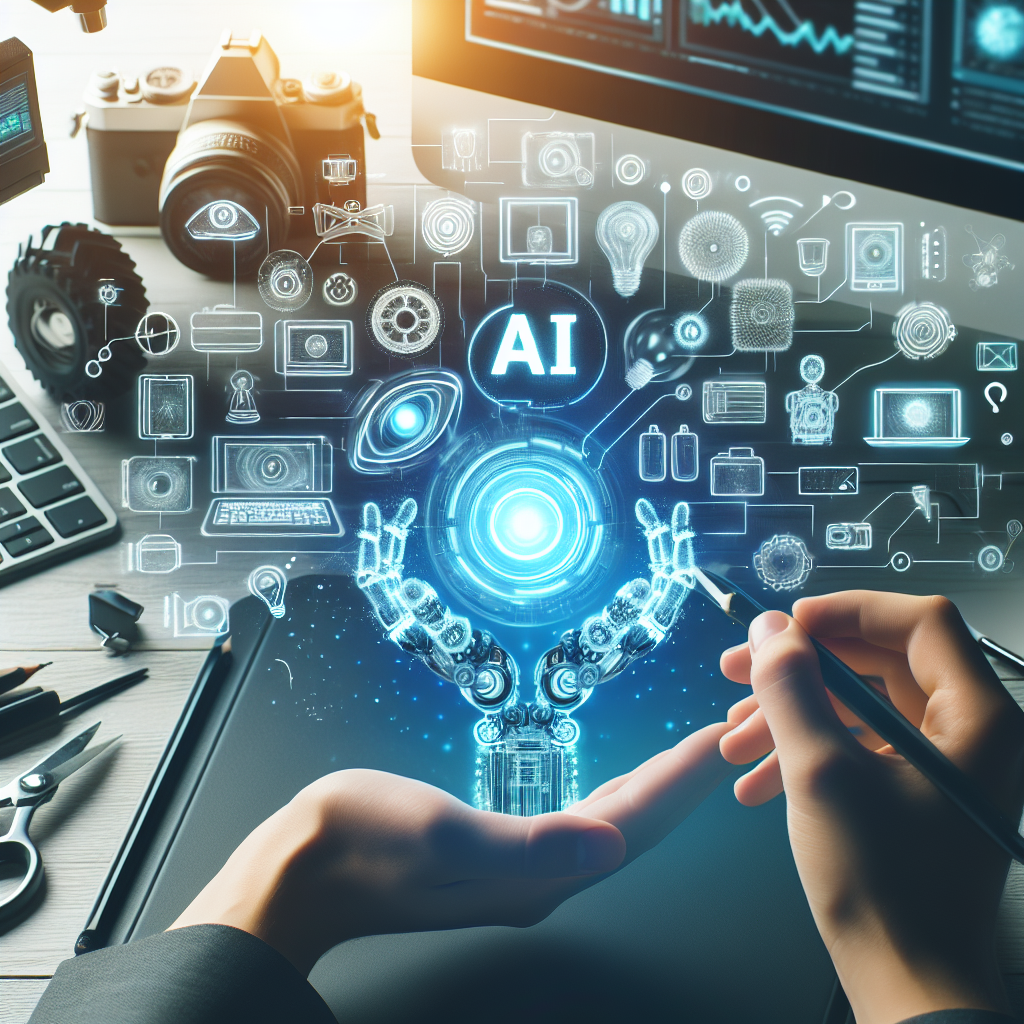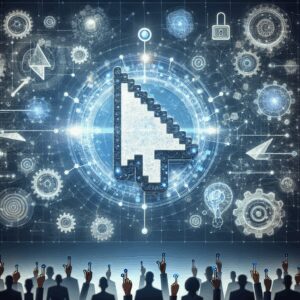Revolutionizing Ad Creation: Harnessing AI for Infinite Creative Possibilities
In the ever-evolving landscape of digital marketing, staying ahead of the curve is not just an advantage—it’s a necessity. As businesses strive to capture consumer attention in increasingly crowded spaces, the demand for fresh, engaging ad creatives has never been higher. Enter the game-changing world of AI-powered ad creation, where a single click can spawn thousands of high-quality ad variations. This innovative approach is not just reshaping the creative process; it’s redefining the very nature of digital advertising.
Today, we’ll dive deep into a groundbreaking system that leverages N8N and OpenAI to transform static image ads into an endless stream of creative possibilities. By the end of this article, you’ll understand how this technology works, its potential impact on the industry, and how you can harness its power to elevate your marketing efforts.
The AI Revolution in Advertising
The advertising industry has always been at the forefront of adopting new technologies, and artificial intelligence is proving to be no exception. As we witness the rapid advancement of AI capabilities, its application in creative fields is opening up new horizons for marketers and advertisers alike.
According to Industry Research Institute 2024, the AI market is expected to grow by 15.3% annually through 2025. This growth is not just a trend but a fundamental shift in how businesses operate and compete. The integration of AI into advertising workflows is particularly exciting, as it promises to address one of the industry’s most persistent challenges: the need for continuous, high-quality creative output.
“The way that this works under the hood is we take the original image, we analyze the image to generate a very detailed description. Once we have that description, we then feed it into AI and generate what are called change requests. This allows us to vary essentially an infinite variety of things in the source image and make it extremely high quality while still retaining the core elements that made that ad pop.”
Nick Saraev
This description from Nick Saraev encapsulates the essence of the AI-driven ad creation system. By leveraging advanced image analysis and generative AI technologies, marketers can now take a single successful ad and spawn countless variations, each retaining the core elements that made the original effective.
The Mechanics of AI-Powered Ad Creation
At its core, the system described by Nick Saraev operates on a simple yet powerful principle: analyze, describe, and regenerate. Here’s a breakdown of the process:
- Image Analysis: The AI examines the original ad image in detail, identifying key elements, composition, colors, and themes.
- Description Generation: Based on this analysis, the AI creates a comprehensive textual description of the image.
- Change Request Creation: The system then generates “change requests” – instructions for altering specific aspects of the image while maintaining its core essence.
- New Image Generation: Using these change requests, the AI produces new variations of the original ad, each unique yet familiar.
This process can be repeated indefinitely, creating a vast array of ad creatives from a single source. The implications of this technology are profound, offering a solution to the constant demand for fresh content in digital advertising campaigns.
The Strategic Advantage of AI-Generated Ads
The value proposition of this AI system extends far beyond mere efficiency. It represents a strategic shift in how businesses approach ad creation and testing.
“The value in this is we still get to stay pretty close to a template that has just clearly and obviously won right. We can actually take advantage of that testing money and use it to spin a working ad concept or formula and then post it on our own.”
Nick Saraev
This insight highlights a *crucial* advantage: the ability to iterate on proven concepts. Rather than starting from scratch with each campaign, marketers can now take a successful ad and create numerous variations, each with the potential to resonate with different audience segments or perform better in various contexts.
According to Business Analytics Quarterly, 73% of businesses implementing AI strategies see improved performance within 6 months. In the context of advertising, this improvement can translate to higher engagement rates, better conversion rates, and ultimately, a stronger return on investment.
Scaling Creativity: From One to Many
One of the most compelling aspects of this AI-driven approach is its scalability. Traditional ad creation processes are often limited by human capacity and creative burnout. The AI system, however, can generate an almost limitless number of variations without fatigue.
“The idea is we don’t just do this one shot perfectly. What we do is we generate dozens, hundreds, potentially thousands of ads and then all a creative agency team does is it just goes through this destination Google folder after sending in the request and then odds are one of these ones that we’ve generated is going to be sufficient if not really good for ads.”
Nick Saraev
This approach fundamentally changes the role of human creatives in the advertising process. Instead of being tasked with producing every single ad, they can focus on curating and refining the AI-generated options. This shift allows for a more strategic use of human creativity, where professionals can dedicate their time to high-level concept development and fine-tuning rather than repetitive production tasks.
The scale of this production capability is staggering. Technology Trends Report 2024 indicates that AI adoption has increased by 45% since 2023, with creative industries being *significant* contributors to this growth. As more agencies and brands adopt these technologies, we can expect to see a dramatic increase in the volume and variety of ad creatives in the market.
The Impact on Ad Testing and Optimization
The ability to generate vast numbers of ad variations doesn’t just solve the problem of creative production—it also revolutionizes the approach to ad testing and optimization. Traditionally, A/B testing has been limited by the time and resources required to create different ad versions. With AI-generated variations, marketers can test a much wider range of concepts and designs simultaneously.
This expanded testing capability allows for more nuanced insights into what resonates with audiences. Marketers can identify not just which ad performs better, but also which specific elements contribute to that performance. This level of granularity in testing can lead to more refined and effective advertising strategies over time.
“The integration of AI has become *essential* for companies looking to remain competitive in today’s market.”
Lisa Chen, Strategic Business Consultant at Innovation Partners LLC
Lisa Chen’s observation underscores the competitive advantage that AI-driven ad creation and testing can provide. As Enterprise Technology Survey 2024 reveals, companies utilizing AI technologies report 28% higher efficiency rates. In the context of advertising, this efficiency can translate to more effective campaigns, better resource allocation, and ultimately, improved ROI.
Practical Applications and Implementation
While the technology behind AI-generated ad creatives is complex, its implementation can be surprisingly straightforward for marketing teams. Here are some practical ways to incorporate this approach into your advertising workflow:
- Identify Your Best Performers: Start by selecting your most successful static image ads as base templates.
- Set Up Your AI System: Implement a system like the one described by Nick Saraev, using N8N and OpenAI or similar technologies.
- Generate Variations: Use the AI to create multiple versions of your top-performing ads.
- Curate and Refine: Have your creative team review and select the best AI-generated options.
- Test at Scale: Deploy the selected variations across your advertising channels and analyze performance.
- Iterate and Optimize: Use the insights gained from testing to inform future ad creation and refinement.
By following this process, marketing teams can dramatically increase their creative output while maintaining quality and consistency with their brand identity. The key is to view AI as a powerful tool that enhances human creativity rather than replaces it.
The Future of AI in Advertising
As we look to the future, the potential for AI in advertising seems boundless. Market Research International projects that global spending on AI solutions will reach $2.4 billion by 2025, indicating *significant* growth and investment in this technology.
“The future of AI lies in understanding the intersection of technology and human behavior.”
Dr. Sarah Mitchell, Technology Innovation Specialist at MIT Technology Review
Dr. Mitchell’s insight points to the next frontier in AI-driven advertising: systems that not only generate creative variations but also predict and adapt to human responses in real-time. We may soon see AI that can dynamically adjust ad creatives based on individual user behavior, time of day, current events, and countless other factors.
“What we’re seeing with AI is not just a trend, but a fundamental shift in how industries operate.”
Michael Thompson, Senior Industry Analyst at Global Business Insights
This shift is likely to extend beyond just image ads. We can anticipate similar AI systems for video creation, copywriting, and even entire multi-channel campaign development. The line between human-created and AI-generated content may become increasingly blurred, leading to new challenges and opportunities in creative attribution and copyright.
Conclusion: Embracing the AI-Powered Creative Revolution
The advent of AI-powered ad creation tools marks a pivotal moment in the advertising industry. By harnessing the power of technologies like N8N and OpenAI, marketers can now turn a single successful ad into an infinite wellspring of creative possibilities. This not only solves the perennial problem of creative fatigue but also opens up new avenues for testing, optimization, and personalization at scale.
As we’ve explored, the benefits of this approach are manifold: increased efficiency, improved performance, and the ability to iterate rapidly on winning concepts. However, it’s *crucial* to remember that AI is a tool to enhance human creativity, not replace it. The most successful implementations of this technology will be those that find the right balance between AI-generated content and human curation and strategy.
For marketers and advertisers looking to stay competitive in an increasingly digital and AI-driven landscape, embracing these technologies is not just an option—it’s becoming a necessity. The future of advertising lies in the harmonious blend of human insight and AI capability, creating a new paradigm of creative possibility and marketing effectiveness.
As you consider integrating AI into your advertising workflow, remember that the goal is not just to produce more ads, but to create more effective, resonant, and impactful campaigns. The technology is here—the question now is how you’ll use it to revolutionize your approach to advertising.





Leave a Reply